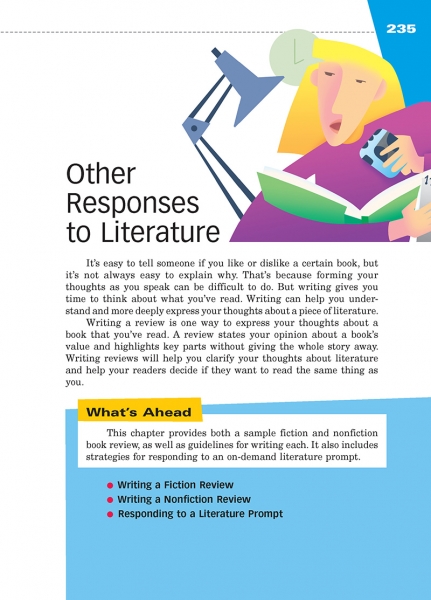Page 235 from

Start-Up Activity
Share with students some scathing first responses to classic fiction:
-
"The shape of For Whom the Bell Tolls is sometimes slack and sometimes bulging. It is certainly quite a little too long." The New Republic
-
"Scott Fitzgerald’s new novel, The Great Gatsby, is in form no more than a glorified anecdote, and not too probable at that. . . . This story is obviously unimportant." The Chicago Tribune
-
"Miss Lee’s problem [in To Kill a Mockingbird] has been to tell the story she wants to tell and yet to stay within the consciousness of a child, and she hasn’t consistently solved it."
Ask if any students have read any of those books, and if so, what opinions they had. Help students realize that different readers respond to literature in different ways. Students will explore some of those ways in this chapter.
Also share with students other responses to literature.
Think About It
“[Walt] Whitman is as unacquainted with art as a hog is with mathematics.”
—The London Critic